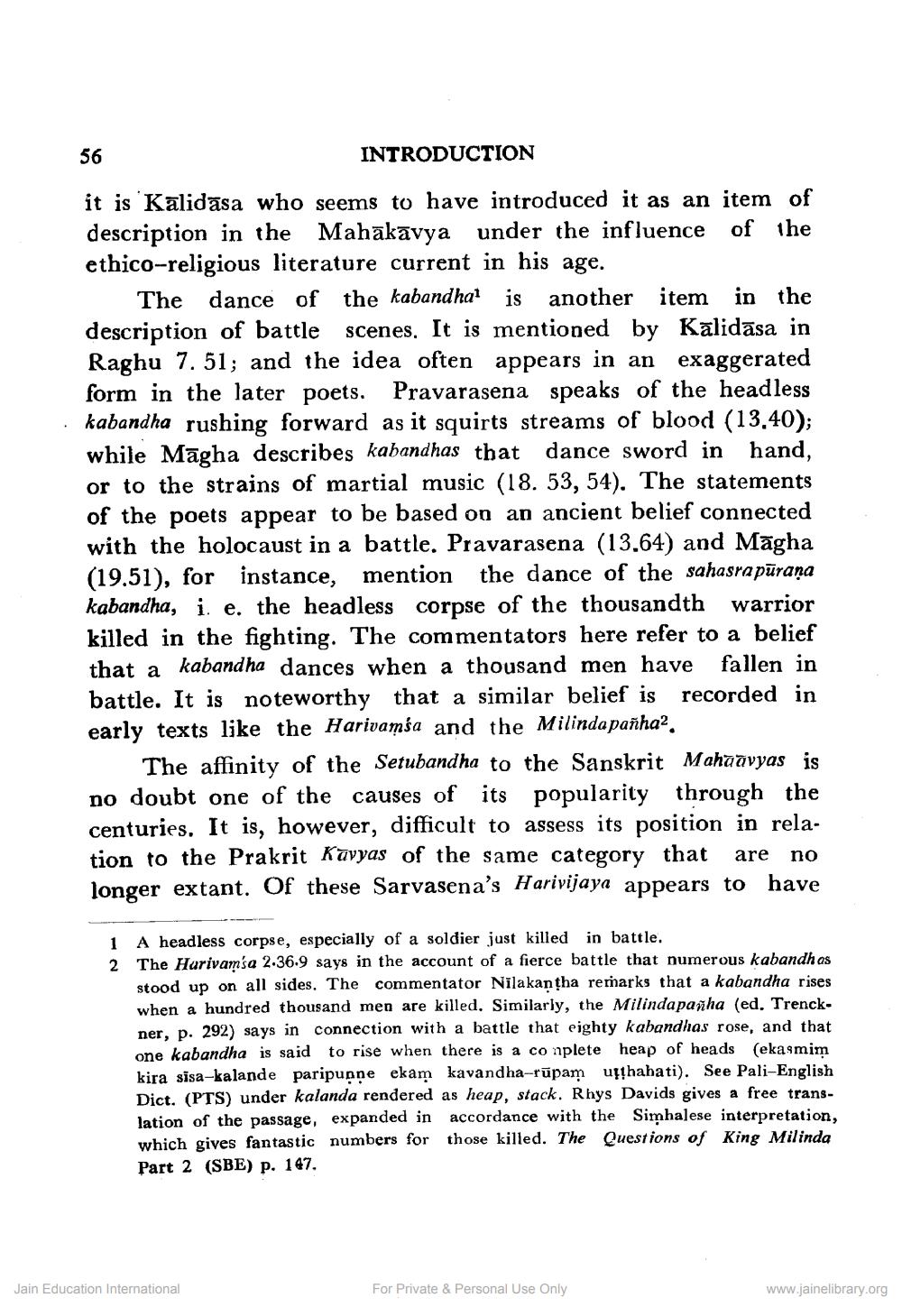________________
56
INTRODUCTION
it is Kalidasa who seems to have introduced it as an item of description in the Mahakavya under the influence of the ethico-religious literature current in his age.
The dance of the kabandha is another item in the description of battle scenes. It is mentioned by Kalidasa in Raghu 7.51; and the idea often appears in an exaggerated form in the later poets. Pravarasena speaks of the headless kabandha rushing forward as it squirts streams of blood (13,40); while Magha describes kabandhas that dance sword in hand, or to the strains of martial music (18. 53, 54). The statements of the poets appear to be based on an ancient belief connected with the holocaust in a battle. Pravarasena (13.64) and Magha (19.51), for instance, mention the dance of the sahasra pūraṇa kabandha, i. e. the headless corpse of the thousandth warrior killed in the fighting. The commentators here refer to a belief that a kabandha dances when a thousand men have fallen in battle. It is noteworthy that a similar belief is recorded in early texts like the Harivamsa and the Milindapanha2
The affinity of the Setubandha to the Sanskrit Mahaavyas is no doubt one of the causes of its popularity through the centuries. It is, however, difficult to assess its position in relation to the Prakrit Kavyas of the same category that are no longer extant. Of these Sarvasena's Harivijaya appears to have
1
A headless corpse, especially of a soldier just killed in battle.
2 The Harivam'sa 2.36.9 says in the account of a fierce battle that numerous kabandh as stood up on all sides. The commentator Nilakantha remarks that a kabandha rises when a hundred thousand men are killed. Similarly, the Milindapanha (ed. Trenckner, p. 292) says in connection with a battle that eighty kabandhas rose, and that one kabandha is said to rise when there is a complete heap of heads (ekasmim kira sisa-kalande paripunne ekam kavandha-rupam uthahati). See Pali-English Dict. (PTS) under kalanda rendered as heap, stack. Rhys Davids gives a free transSimhalese interpretation, Questions of King Milinda
lation of the passage, expanded in which gives fantastic numbers for Part 2 (SBE) p. 147.
accordance with the those killed. The
Jain Education International
For Private & Personal Use Only
www.jainelibrary.org




